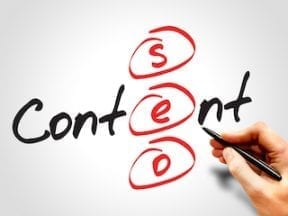Internal links benefit search engine optimization. But knowing how to use them and understanding their value is not always clear. What follows are 10 frequently asked questions for internal-link management for SEO.
10 FAQs for Internal Links
1. How are internal and external links different?
It’s a matter of who’s doing the linking. An internal link is something you control — you link from one of your pages to another. External links are created on another site and link to yours. External links are also known as backlinks.
2. How do internal links help with SEO?
Internal links do three things:
-
- Signal value. Search engines assume your internal linking decisions indicate your priorities — what you consider important.
-
- Signal relevance. The words used in a link’s anchor text help search engines understand the meaning of the page being linked to.
-
- Create relationships between pages. It’s unlikely that two unrelated pages will link to each other. Links tie two pages together contextually, lending additional meaning to both.
External links convey the most value, but internal links help distribute the value more evenly so that other pages have a better chance of ranking in organic search.
3. Which pages should I link to?
Link to pages that you want to rank. The more you need a page to rank, the more links that page requires.
4. Where should I place internal links?
Link from pages that have a higher value, such as a home page and higher-level category pages. But all relevant pages are candidates for linking. Every page on your site links to other pages via the header and footer navigation. Use that navigational structure to link to your most important pages.
You can also create contextual links in the main body of the page. For example, you could link from a paragraph on your home page to your most important category page. Make sure the links are part of the page’s design, though, and have some value to your shoppers. Slapping a list of links at the bottom of a page solely for SEO is spam, and search engines will treat it accordingly.
5. How many internal links should my site contain?
There is no definitive answer other than the links should be relevant to the content and useful to shoppers. Placing more than three links in a sentence will look obnoxious to shoppers. However, if a sentence is a bulleted list of useful resources, six links for six bullets might be appropriate.
6. What should the link text be?
The visible part of the link — called “anchor text” or “link text” — should be a relevant keyword or phrase. Avoid using “learn more” and “click here” unless that’s what you’re trying to rank for.
7. Should I link from my blog to my ecommerce site?
Yes. A blog or other content section should link to your ecommerce pages and vice versa. Links from high-authority pages have the most value.
8. How do I make an internal link in HTML?
Basic HTML links are structured, as shown above, with an anchor tag, a URL, and anchor text.
9. How do I make an internal link in WordPress?
In WordPress, linking is as easy as copying the URL you want to link to, clicking the link icon shown below, and pasting the URL into the field that pops up.
10. How do I identify broken internal links?
You’ll have to deal with broken links sooner or later as you add and remove content and change URLs. You can monitor broken links for free in Google Search Console’s Coverage report, which will list URLs that return a 404 error, signifying a broken link. For each of those URLs, use Search Console’s URL inspection tool to determine where they’re being linked from.
Alternately, you can use a crawler such as Screaming Frog’s SEO Spider or DeepCrawl. It will tell you which of your URLs return 404 error codes and the pages that link to them.







